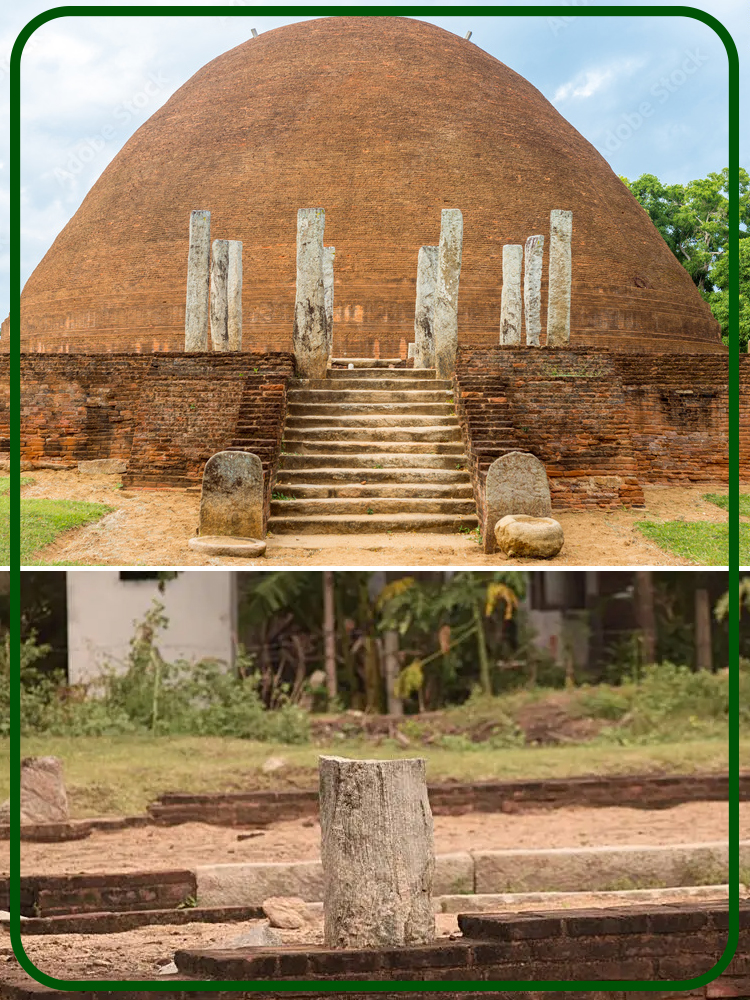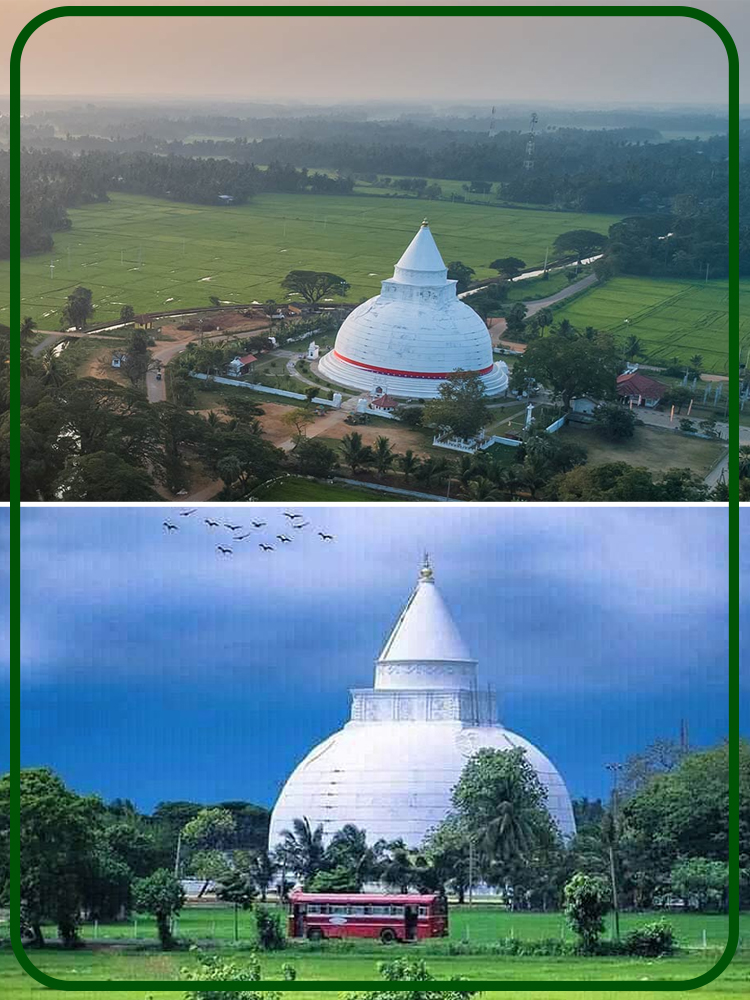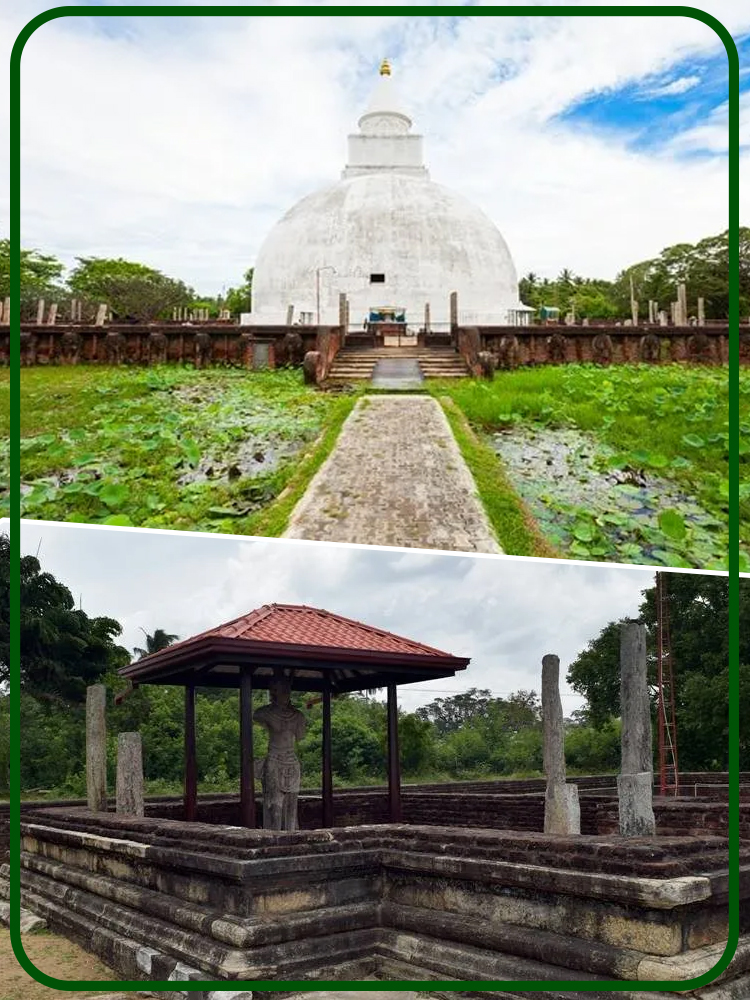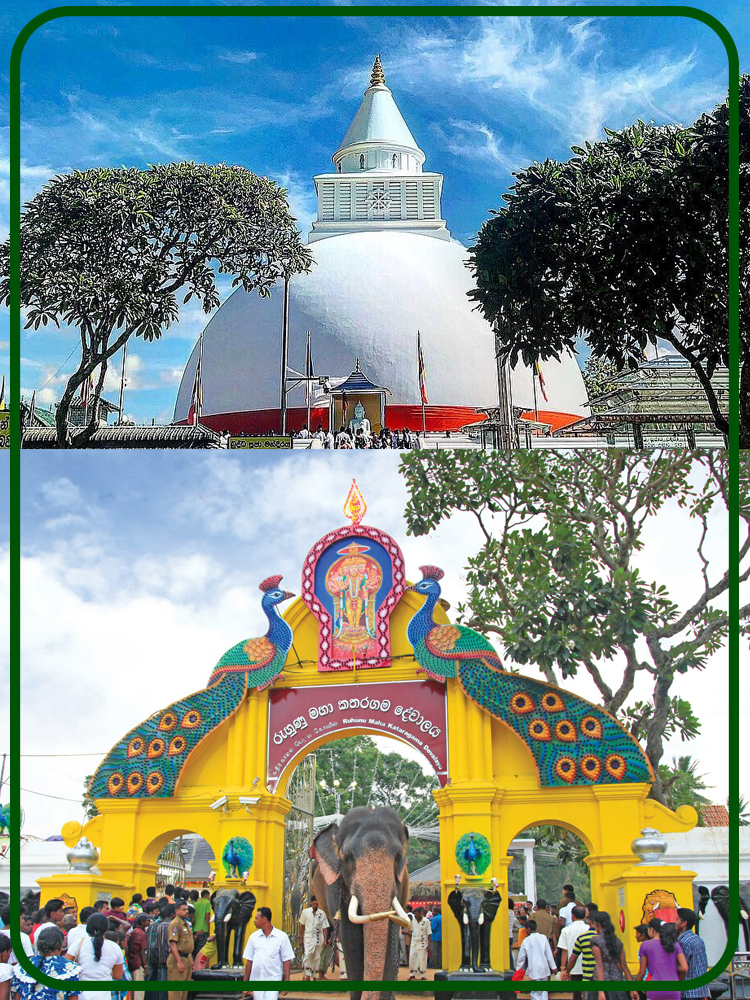Culture Tour ( Buddhist & Hindu Temple Tour )

Sandagiriya Stupa
Originally built by the Portuguese in the 16th century, Galle Fort was expanded to it's
present state a century later by the Dutch. To this day it remains one of the best examples of
a fortified city built by Europeans in South Asia, and demonstrates the unique blend of
European and South Asian architectural styles. Over the last few years Galle Fort has been
transformed into an enclave of Sri Lankan and European style restaurants, hotels, shops and
art galleries set in the stunning UNESCO World Heritage Site.

Tissamaharama
WEWURUKANNALA VIHARA IS MOST FAMOUS for a gargantuan seated Buddha
waiting to greet devout pilgrims, but the temple’s most wonderfully unexpected (and
unsettling) feature lies somewhere along the way.
The temple is divided into three parts, the oldest of which dates back to the 18th-century
reign of King Rajadhi and has a more modest Buddha worked into the structure’s outward-
facing architecture. The second element, the giant Buddha statue, was constructed in the
1960s when a penchant for larger-than-life roadside attractions took the world by storm. At
160 feet tall, it literally and figuratively rises above the quagmires of earthly life. Which
leads to the third, most overlooked, aspect of Wewurukannala Vihara: in order to meet the
big Buddha up-close, visitors must first navigate the Tunnel of Hell.


